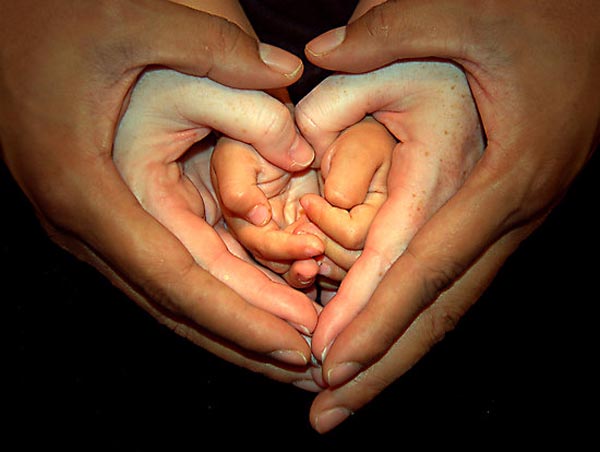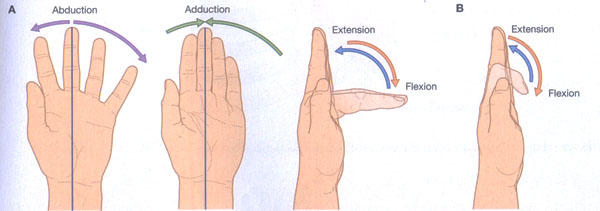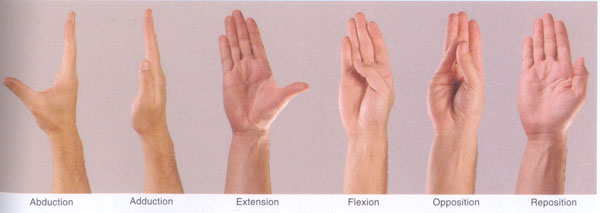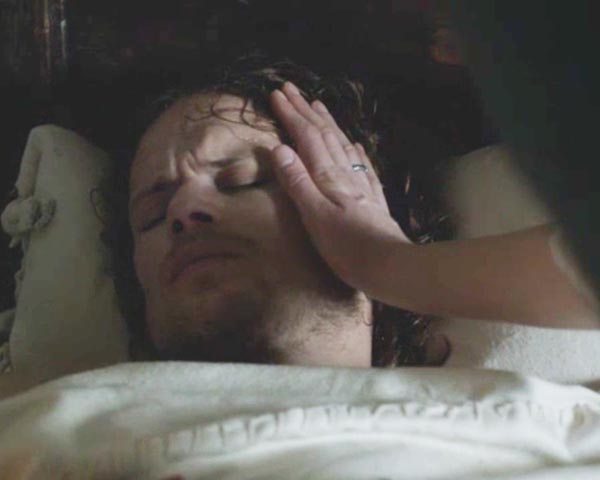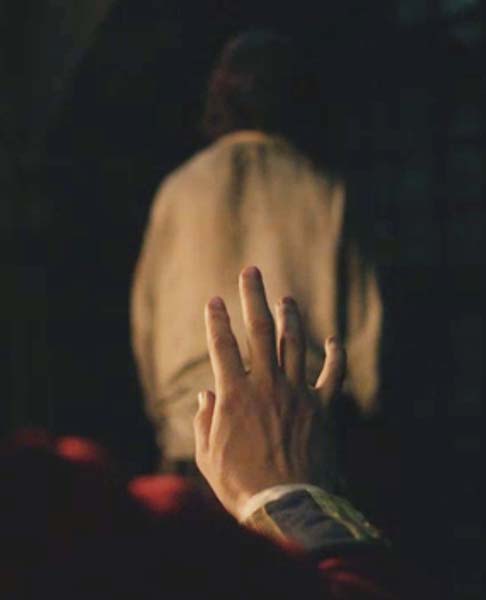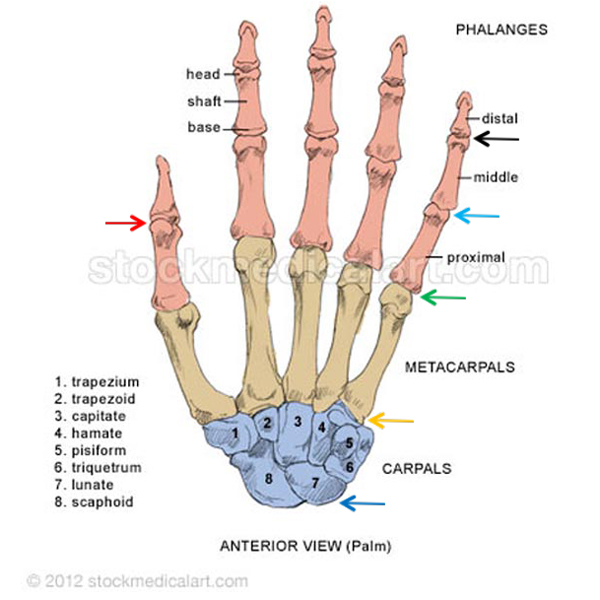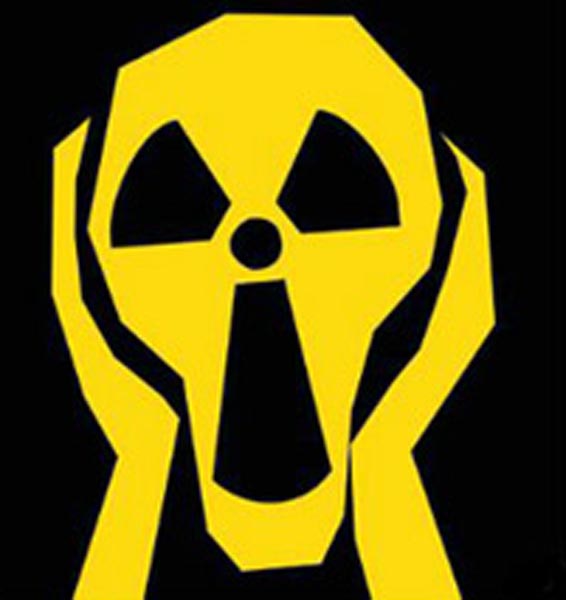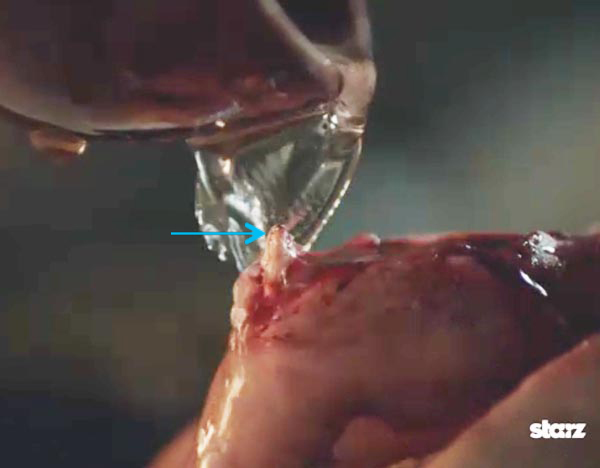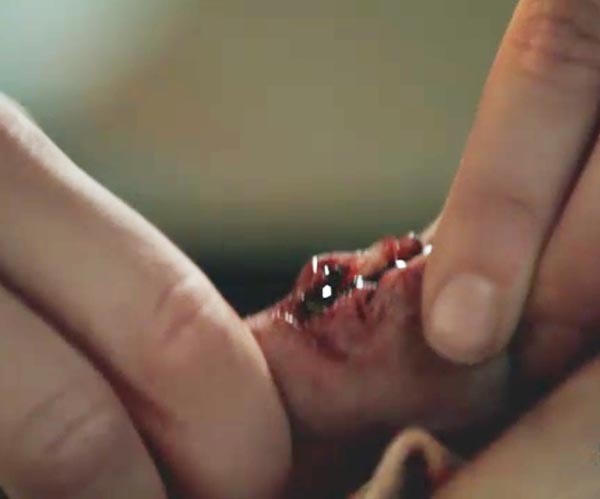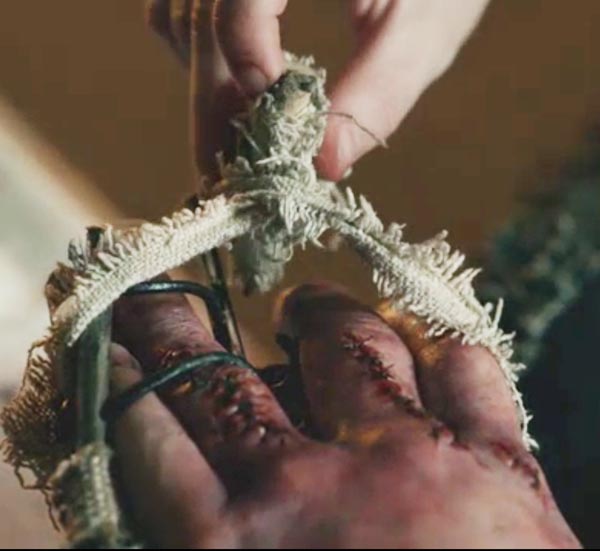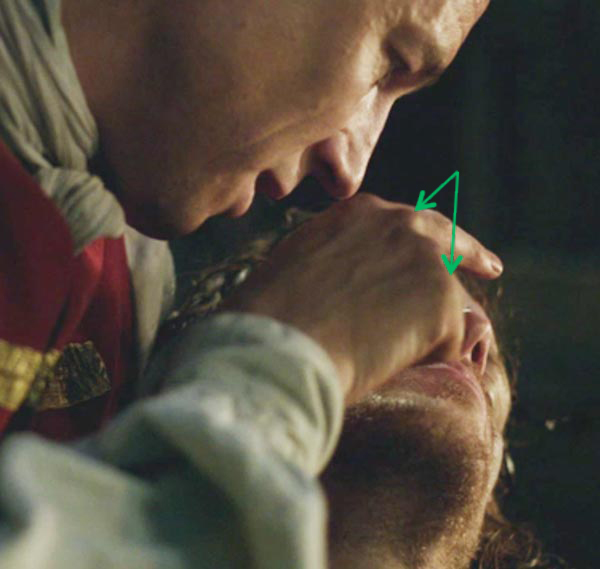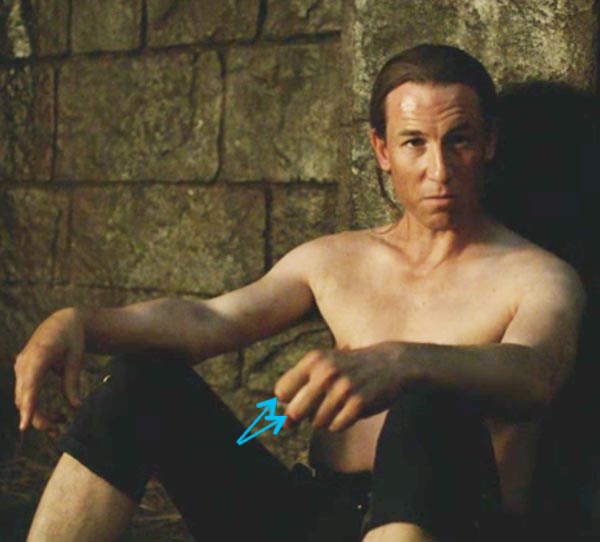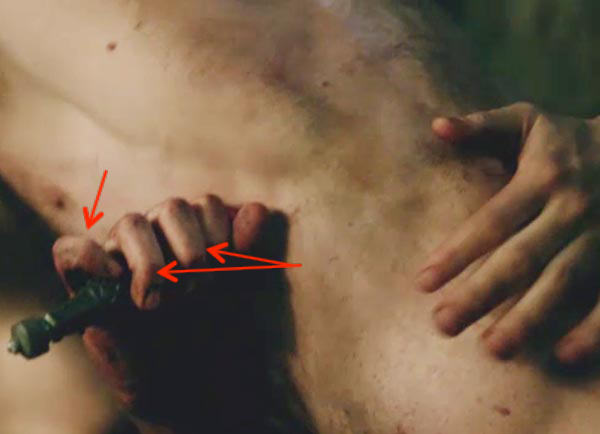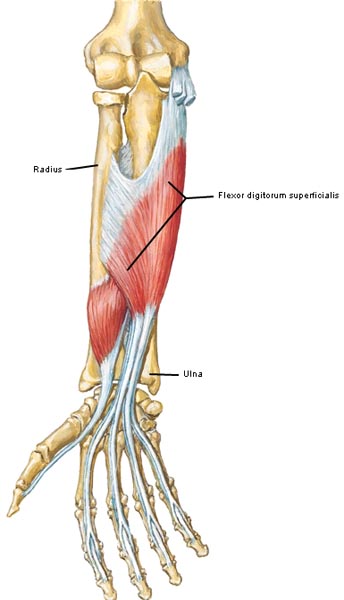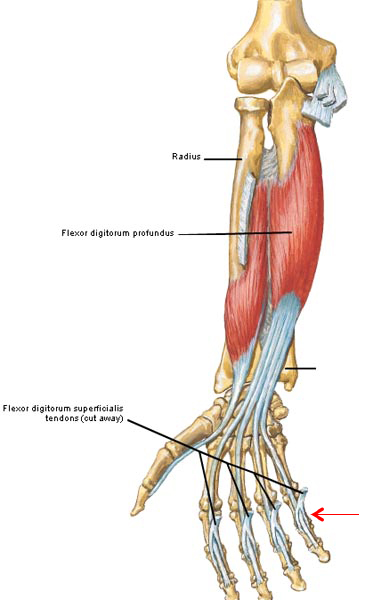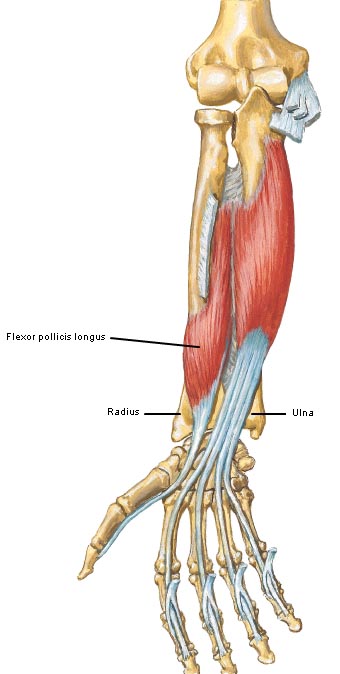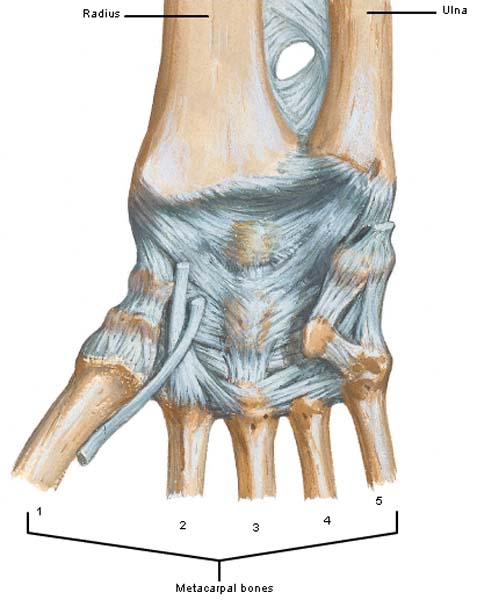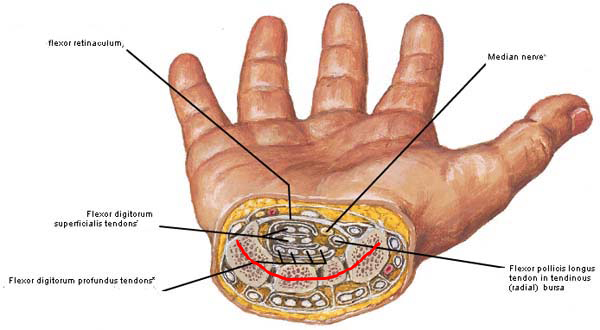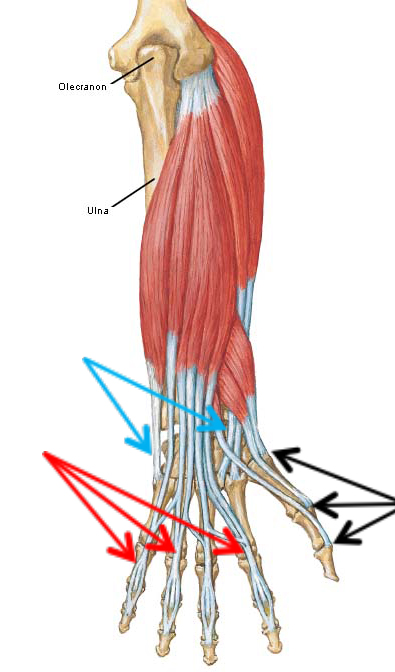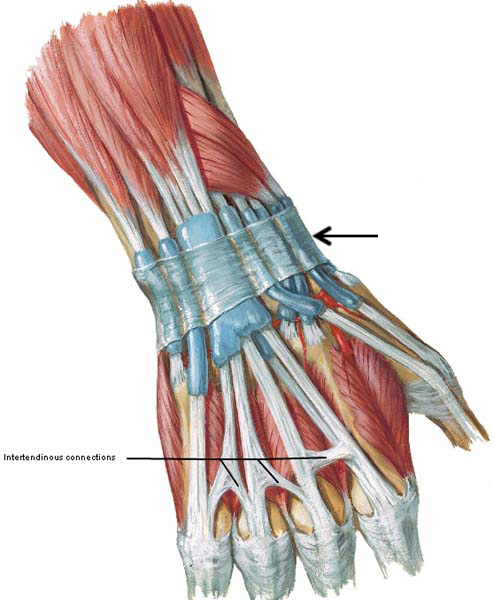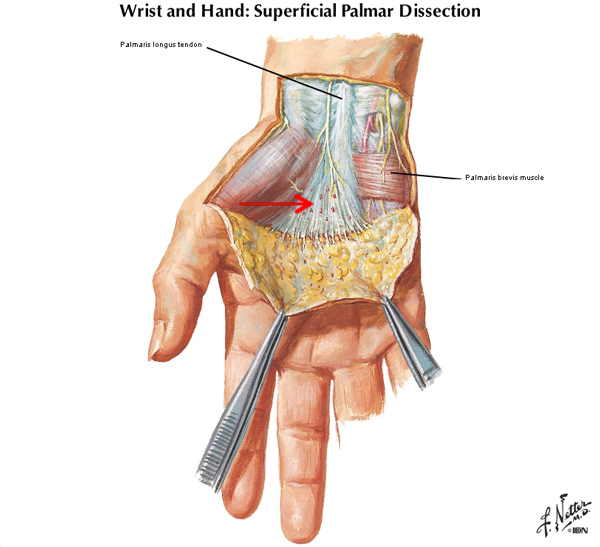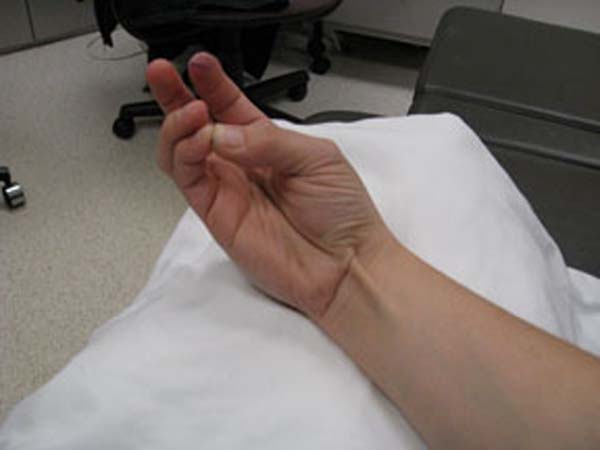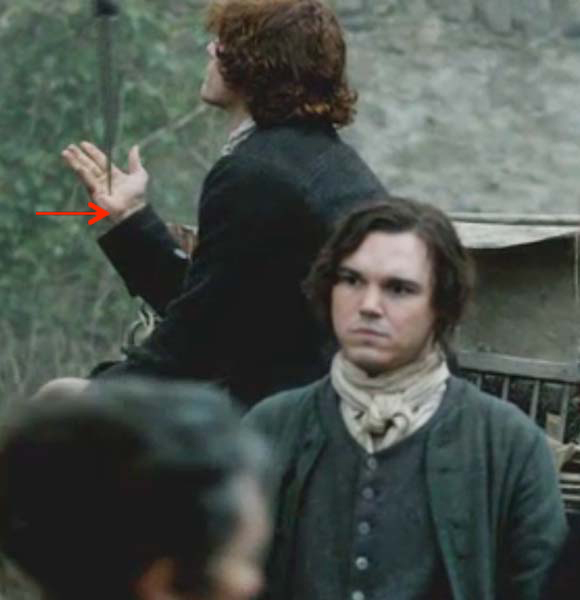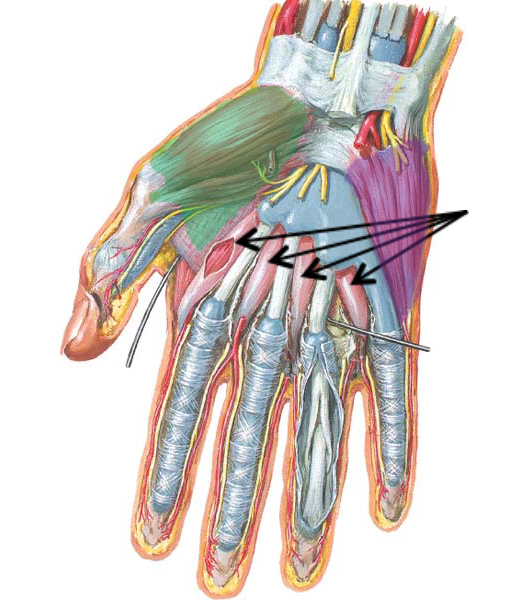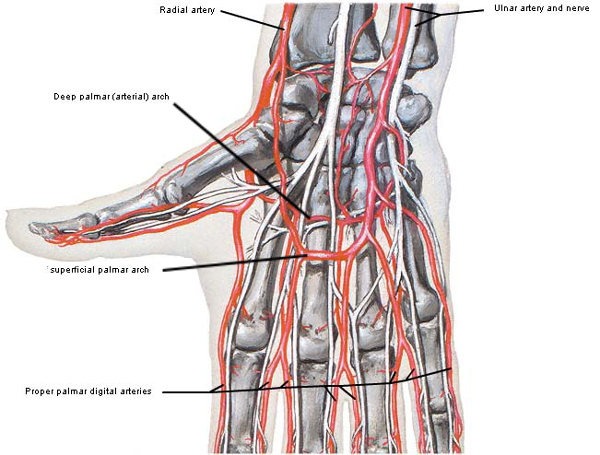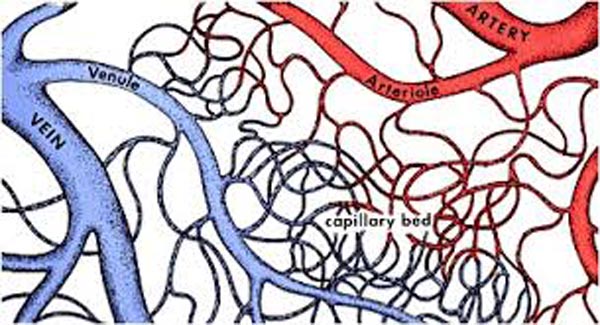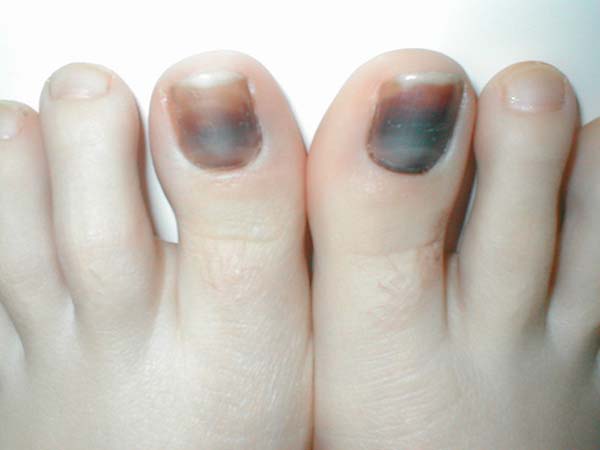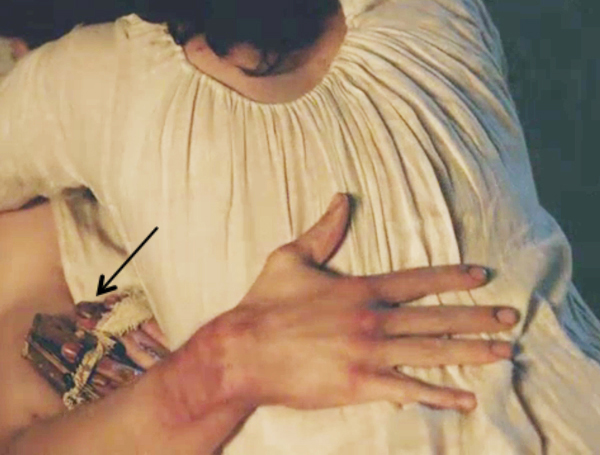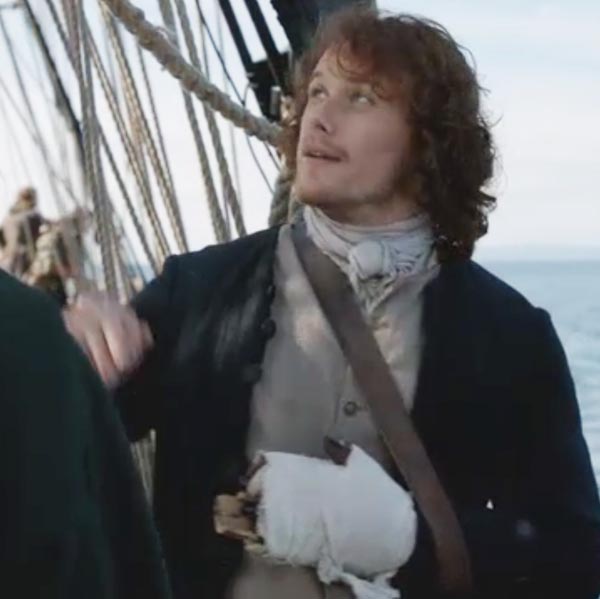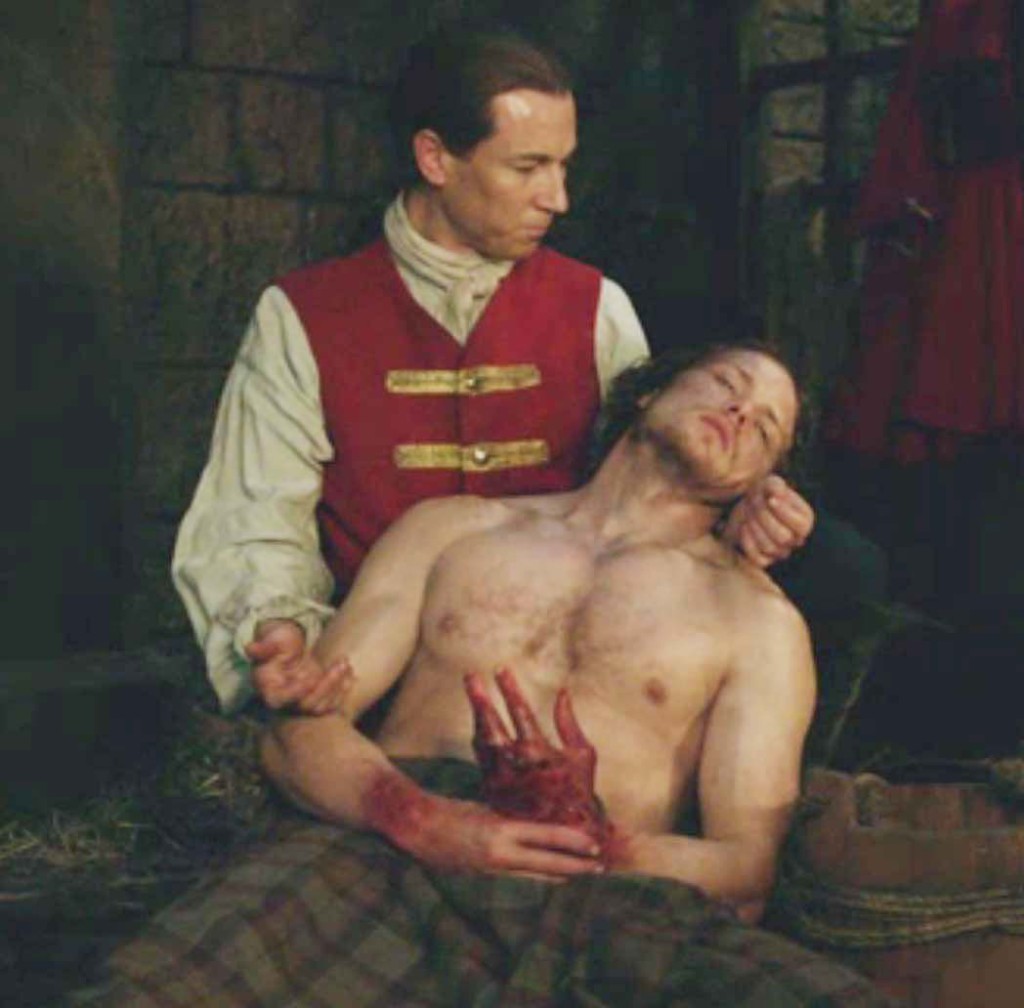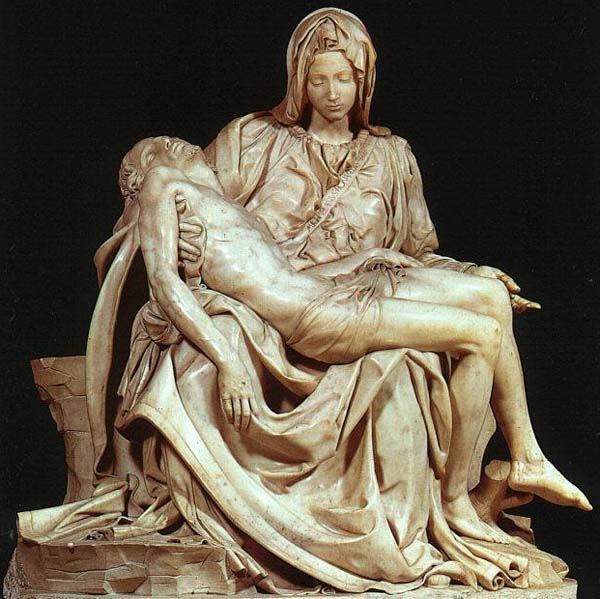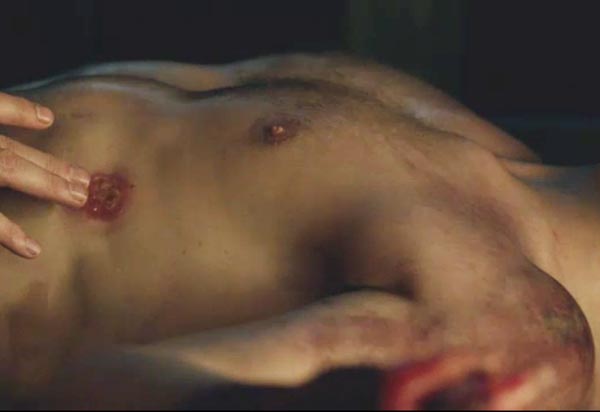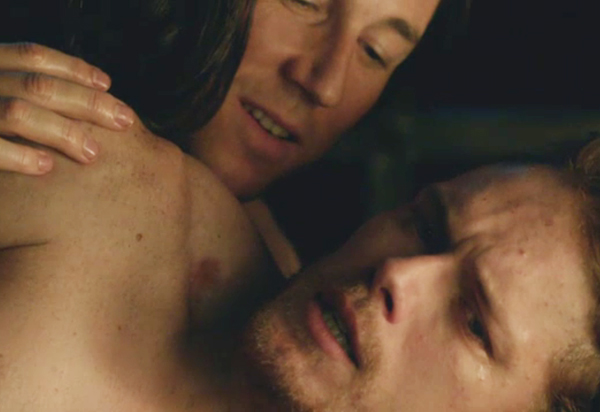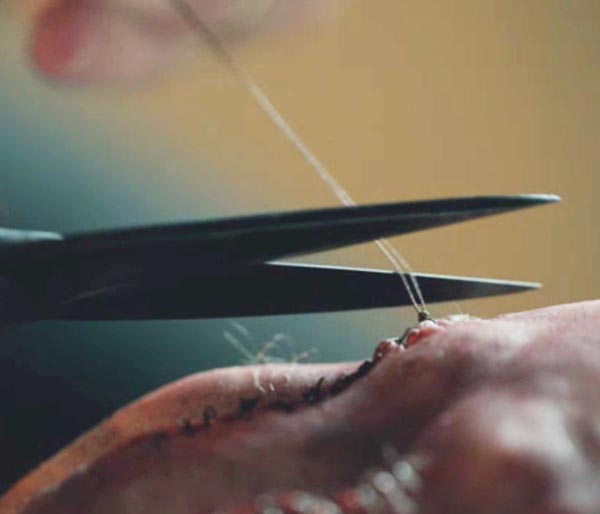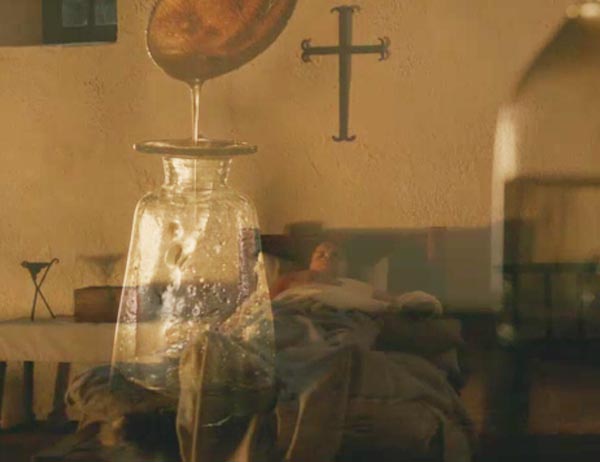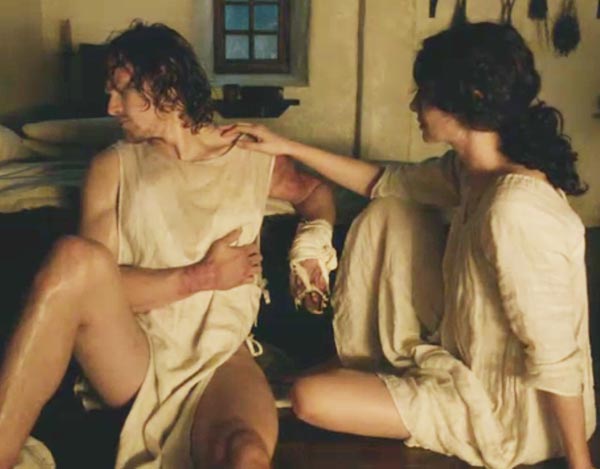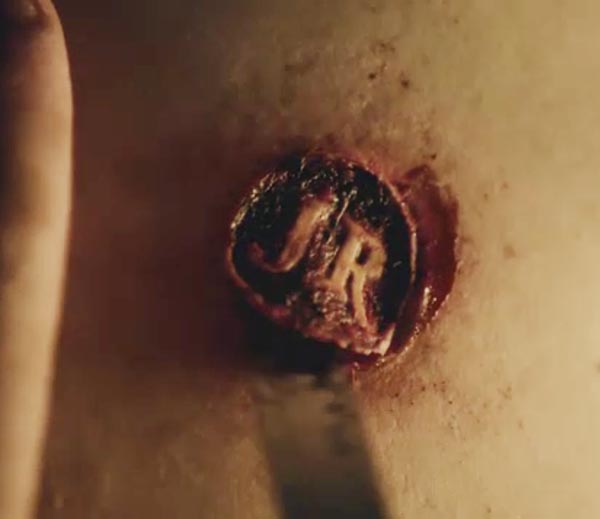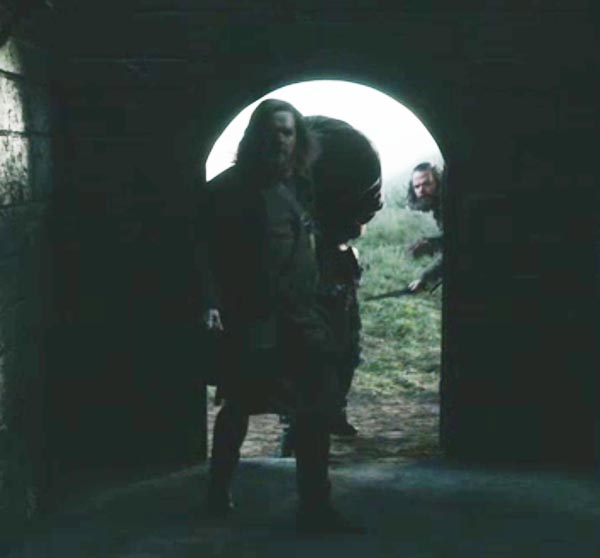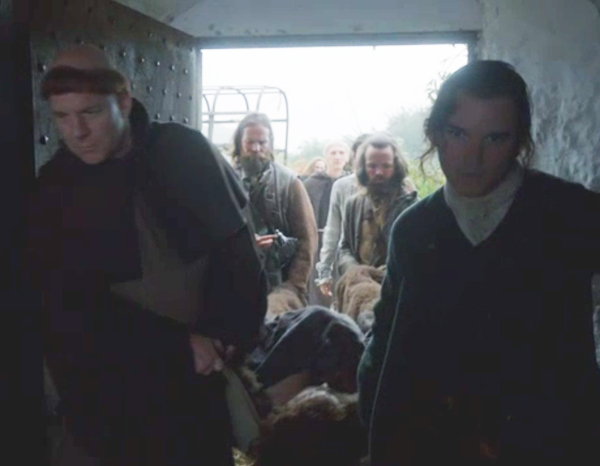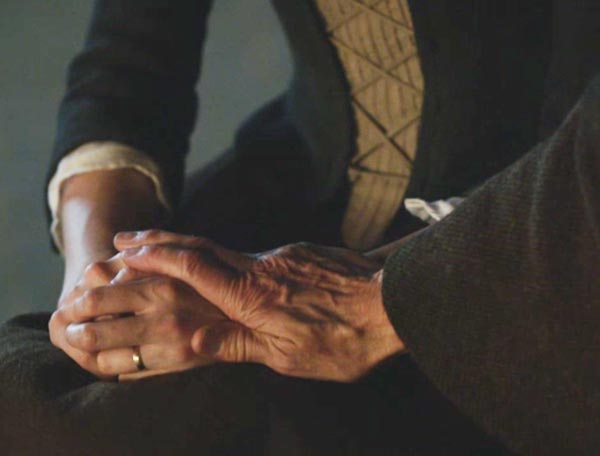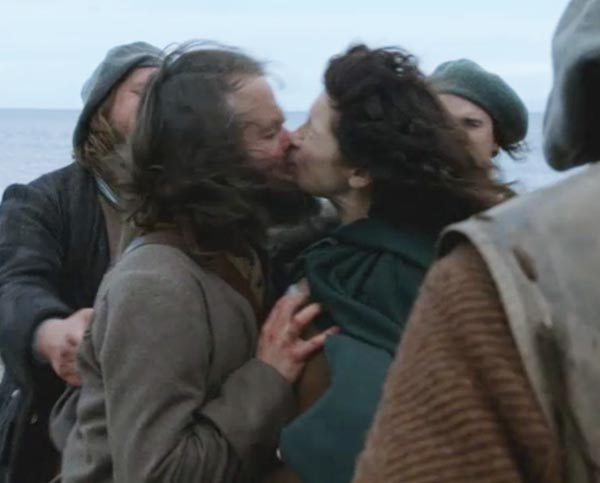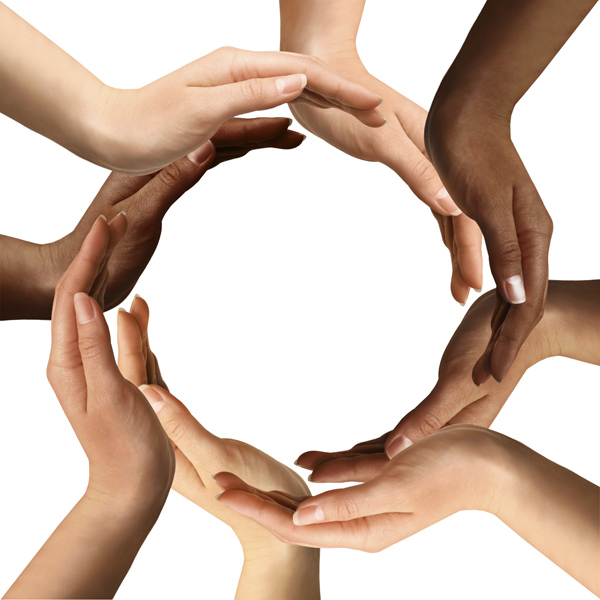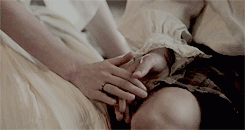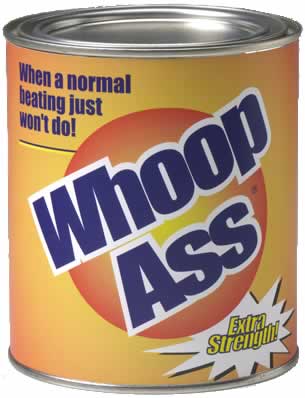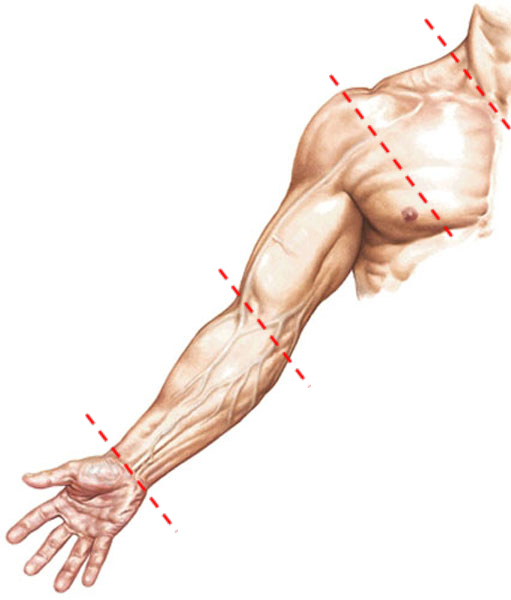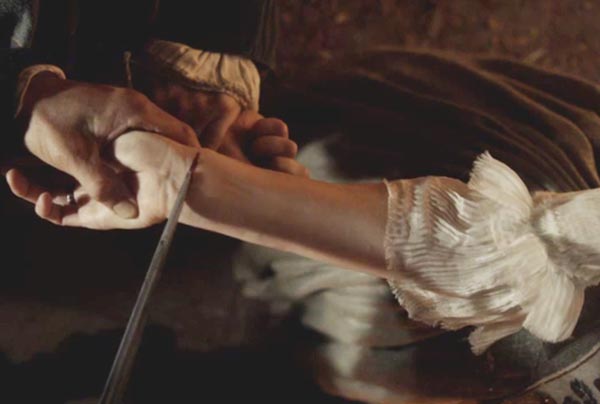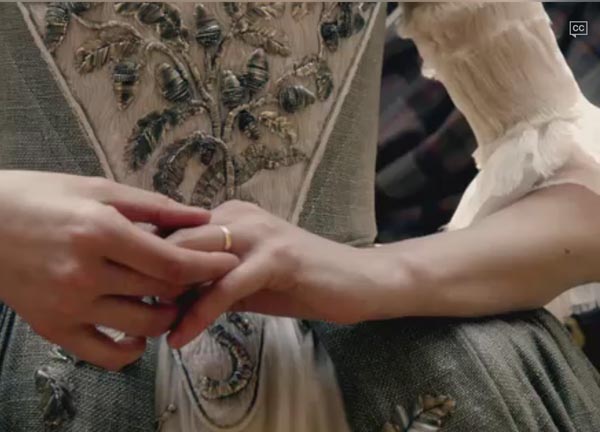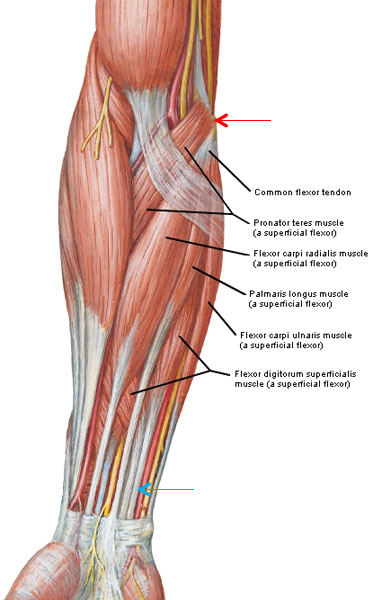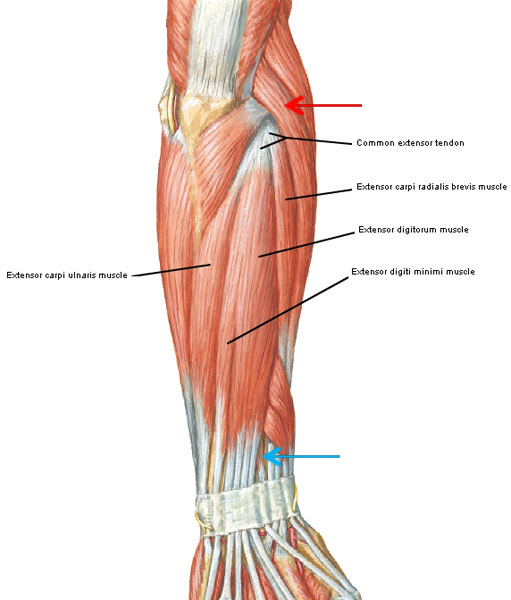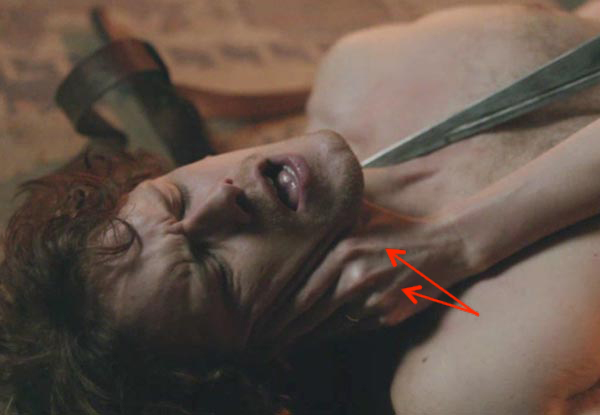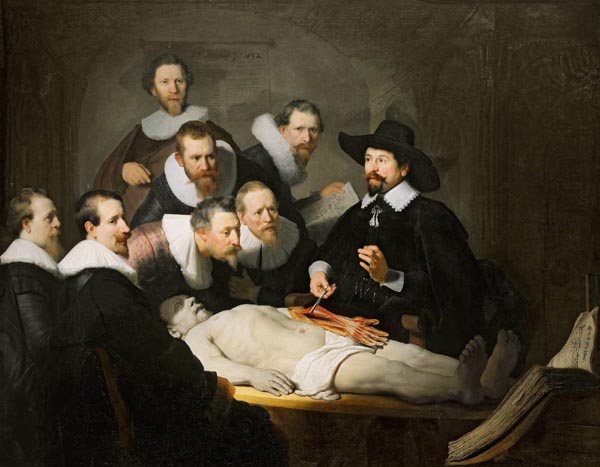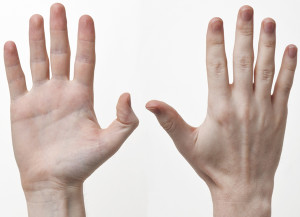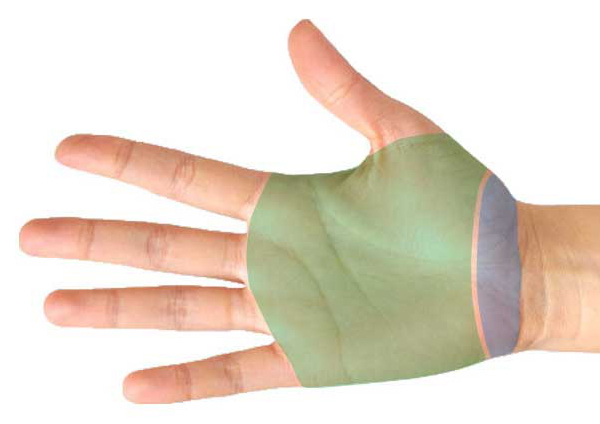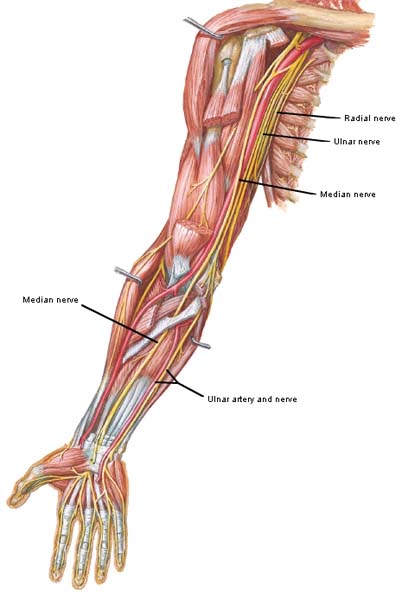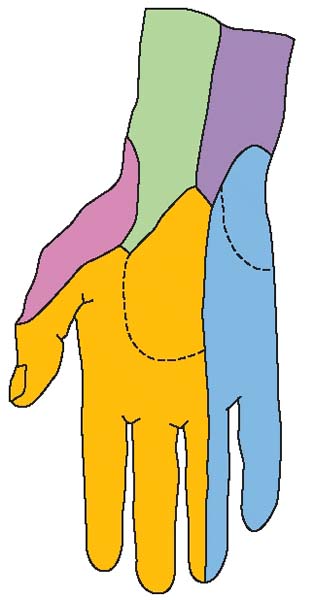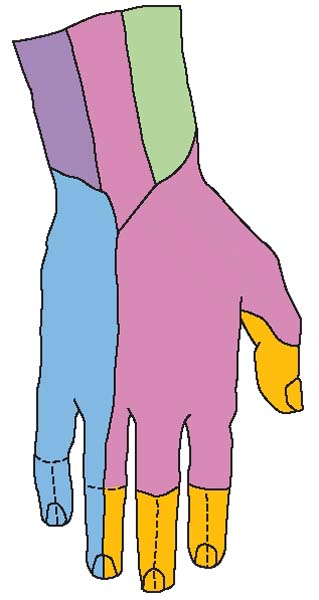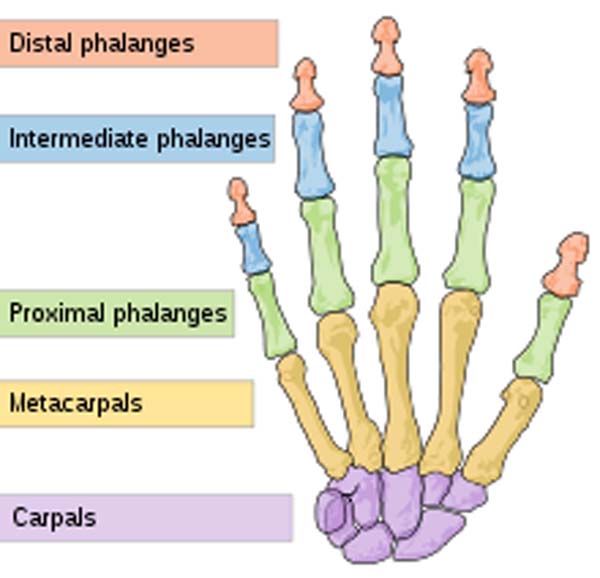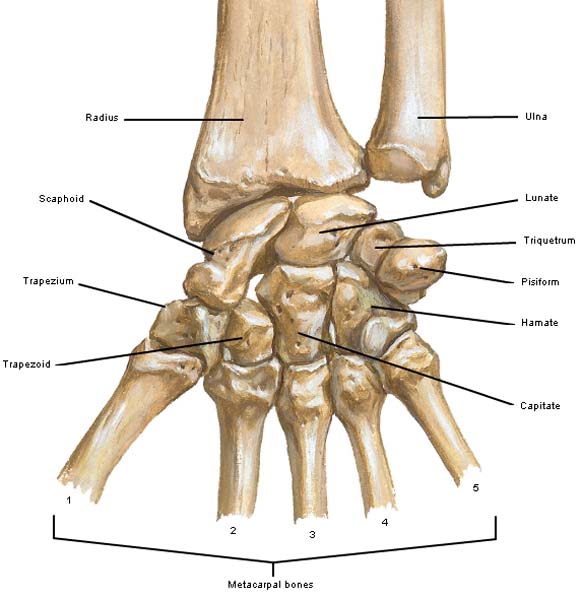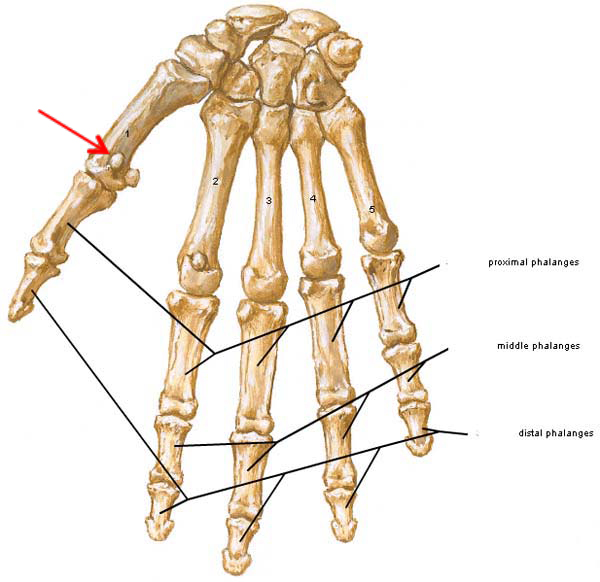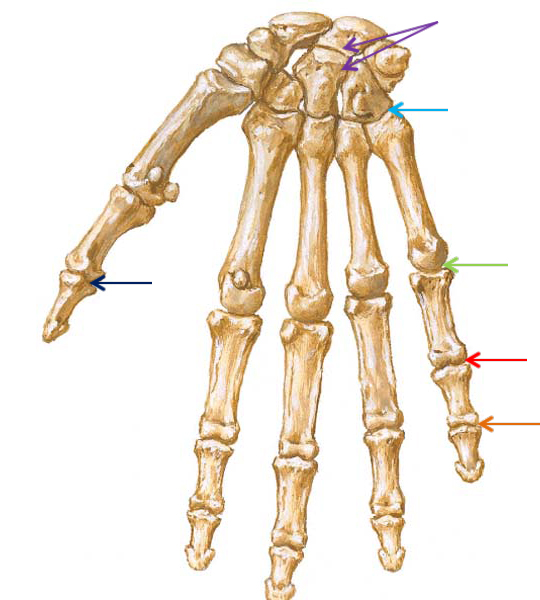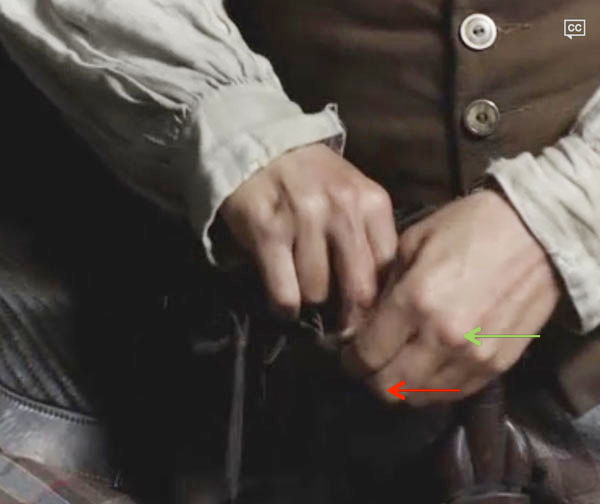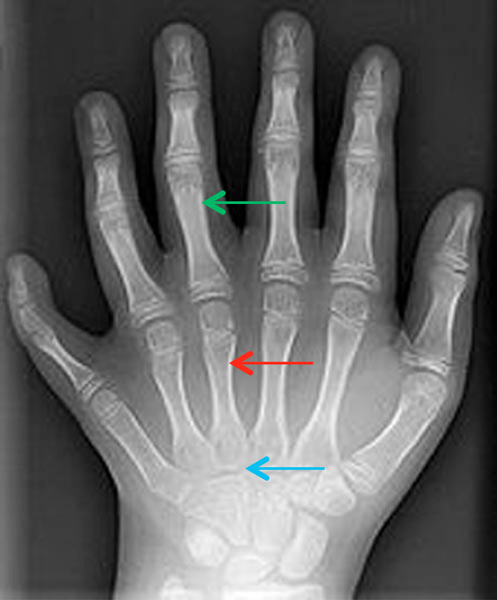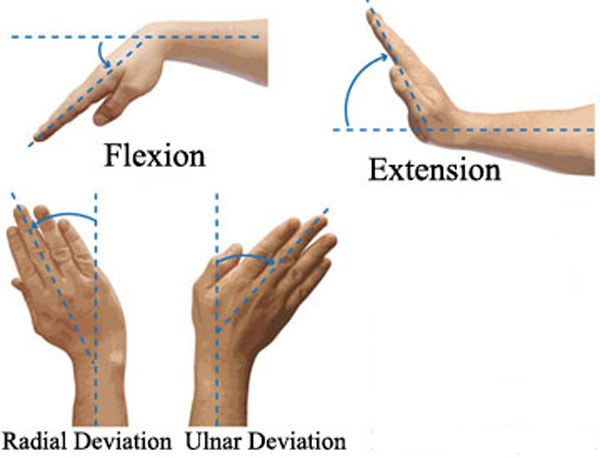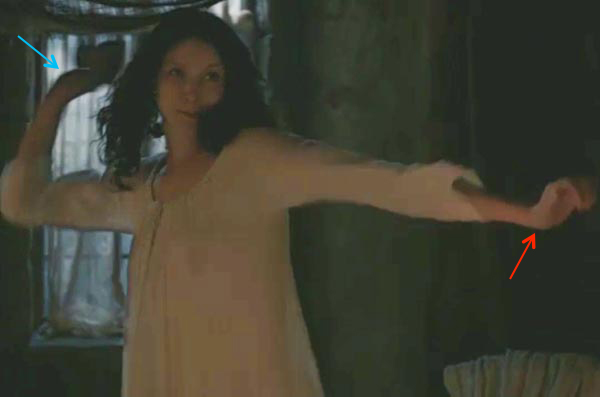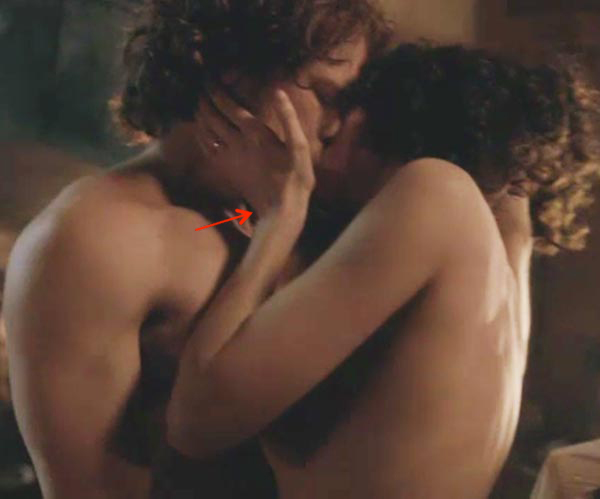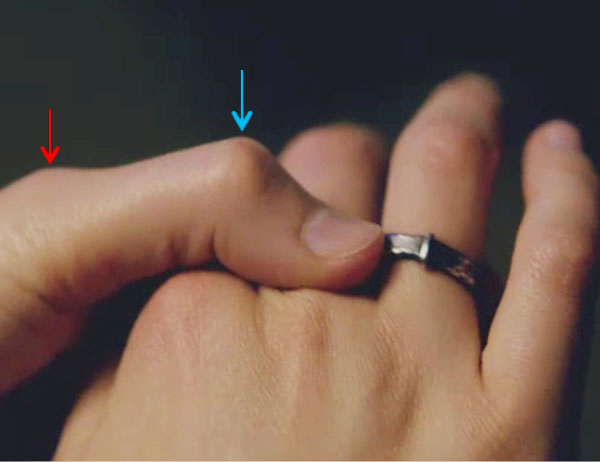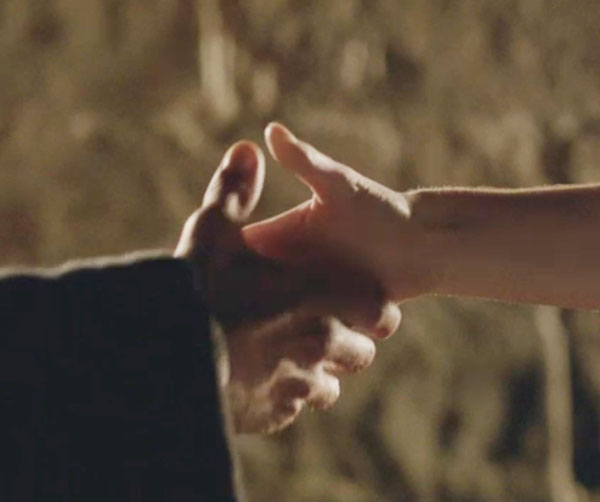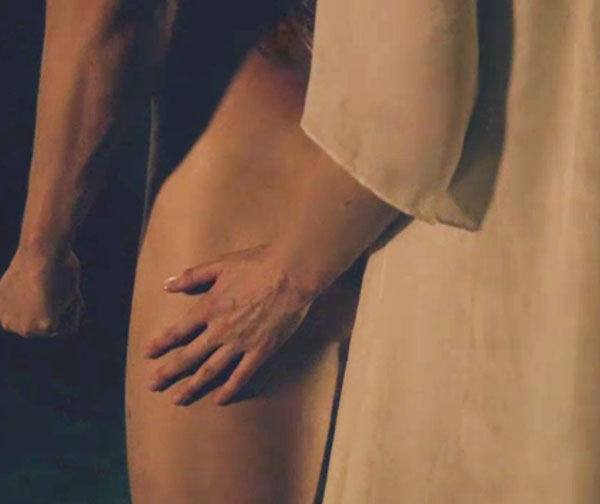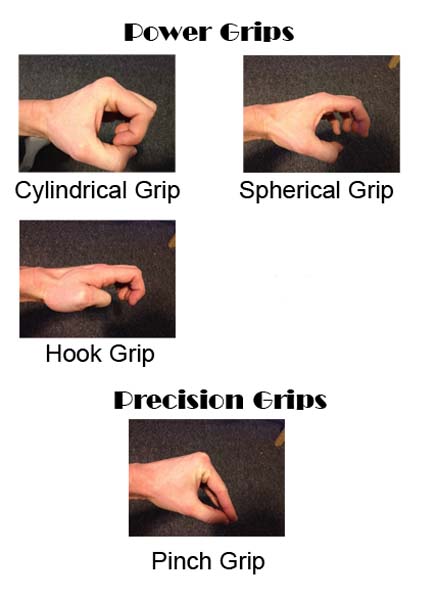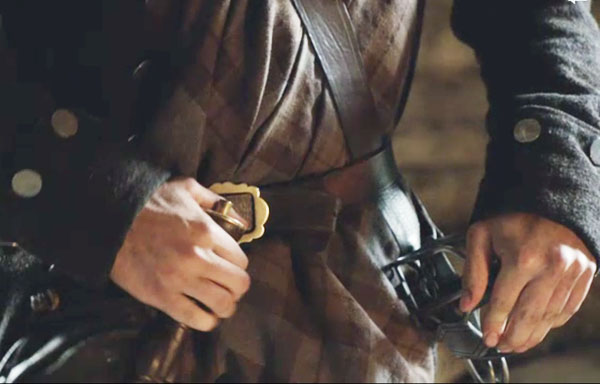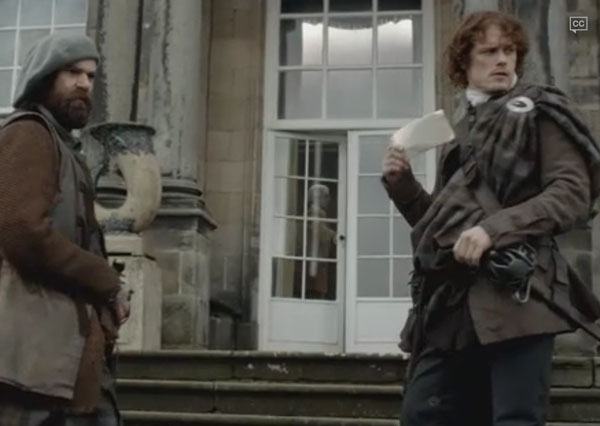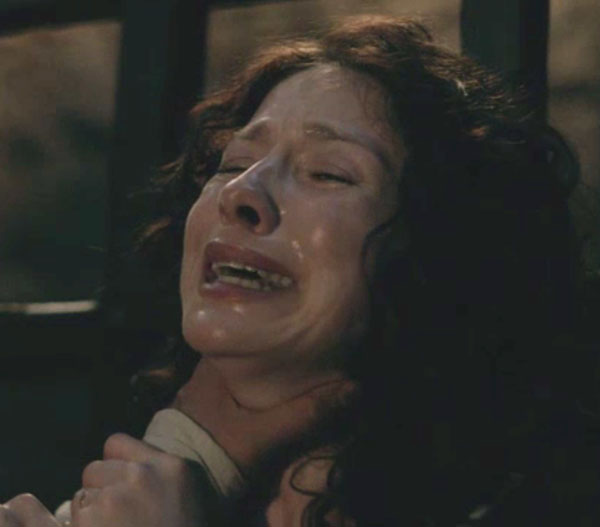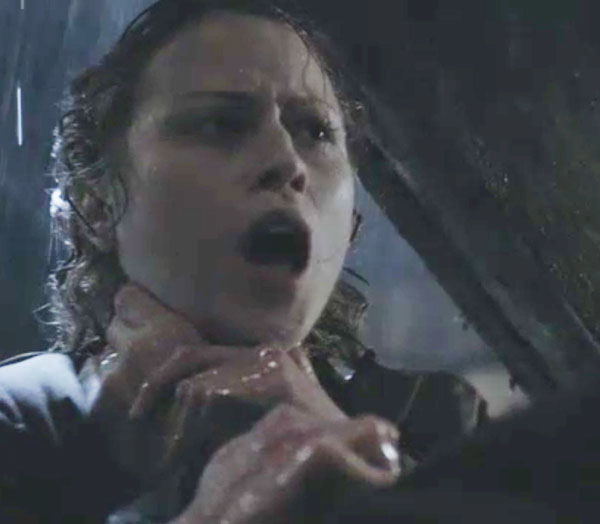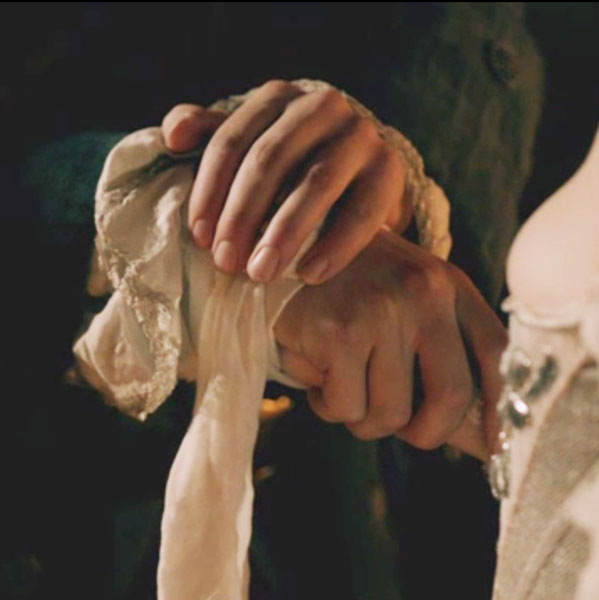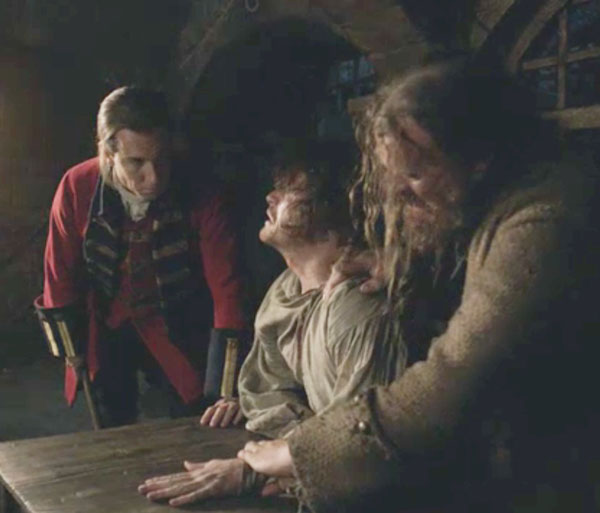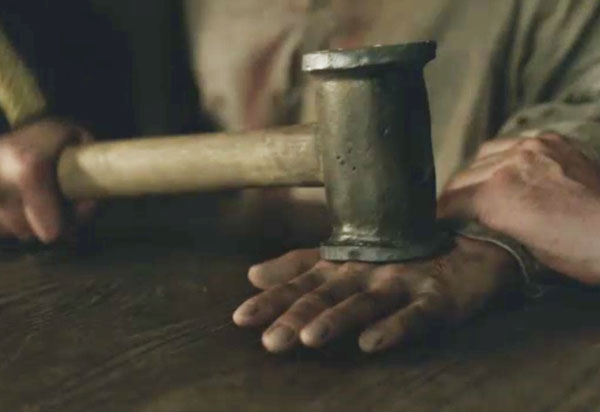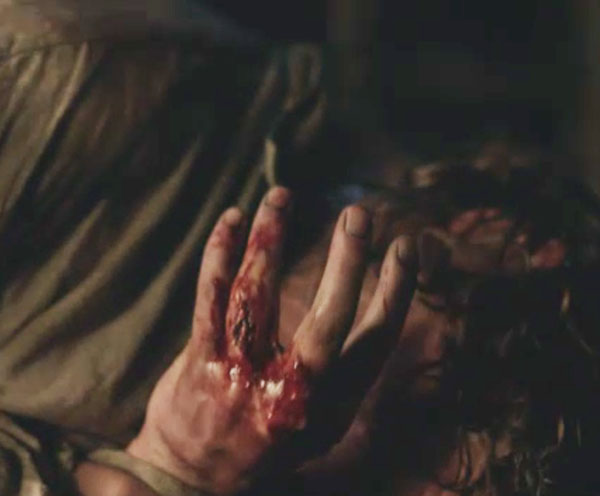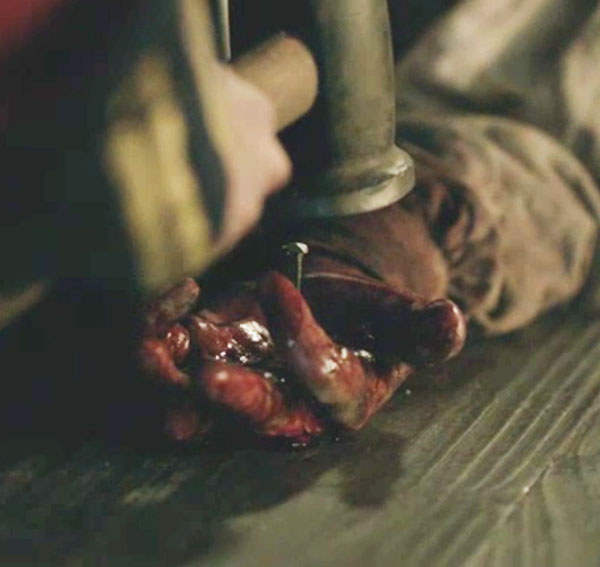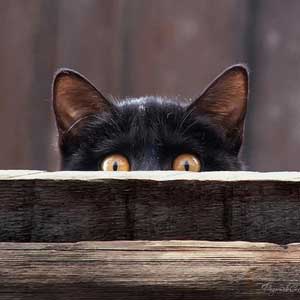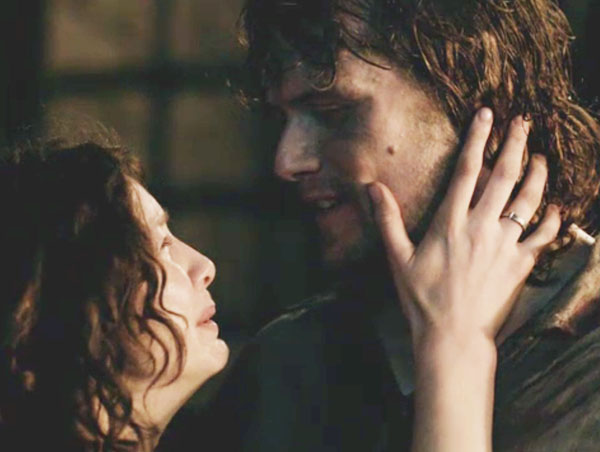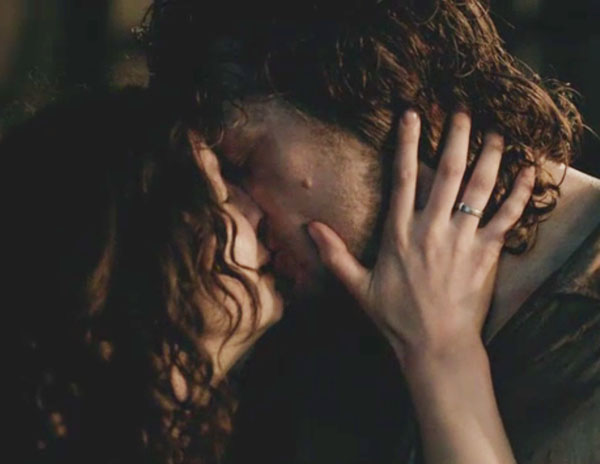Hallo Outlander Anatomy students! Welcome to Anatomy Lesson #23: The Hand – Part 2. Anatomy Lesson #22 introduced the hand but there is still much more structure and function to learn.
Today’s task is three-fold: to enrich our understanding of hand anatomy, to apply that anatomy using images from Starz episodes and to consider how hands are used. For most of us, our hands are with us throughout life so the way we use them helps define how we work, play and live (Photo A).
So, how do we use our hands? What tasks do we apply them to? Are the tasks helpful, harmful or neither? Outlander books and the Starz series provide abundant examples of hurtful hands, helpful hands and healing hands which are considered in this lesson. Just so we are all on the same page, all Starz images in this lesson are from episode 116, To Ransom a Man’s Soul, unless otherwise stated.
Photo A
Let’s begin the lesson with a brief review of digit and thumb movements and of the hand skeleton.
Our four fingers (U.S. definition or digits #2-#5) carry out four movements: abduction, adduction, flexion and extension (Photo B). Try all four movements with your own fingers.
Photo B
Because thumb anatomy differs from that of the fingers, it can perform seven independent movements: abduction, adduction, extension, flexion, opposition, reposition (Photo C) and circumduction (thumb moves in a circle – not shown in Photo C). Try all seven thumb movements.
Reposition (Photo C – right image) is the hand with all digits at rest or repose, a benign anatomical position maintained with little muscular effort.
Photo C
In the image below, Claire’s healing hand is held in repose/reposition as she offers comfort to an angry, distraught guilt-ridden Jamie:
“Dinna touch me!” … “You canna save a man that doesna want saving!”
Next, consider the crazy creepy crawler’s hand reaching for Jamie, the “object” of his obsession (Starz episode 115, Wentworth Prison). The palm is turned from our view but consider his hand. Is it at rest? Is it neutral? Anatomically, BJR’s hand yearning for Jamie is very nearly in reposition and although it may seem benign, we know it portends great harm. There’s a keen difference between anatomical positions of the hand and the intent behind such positions.
Next, let’s review bones of the hand (Anatomy Lesson #22). The complex skeleton of the hand contains 27 bones (Photo D – left hand, palm up): 8 carpals in the wrist, 5 metacarpals in the mid-hand and 14 phalanges in the digits. Each finger (digits #2-#5) contains three phalanges but the thumb (digit #1) has only two.
The bones of the hand create many joints (Photo D):
-
- blue arrow shows wrist joints (between forearm and carpals)
- orange arrow shows carpometacarpal joints (CM)
- green arrow shows metacarpophalangeal joints (MP)
- turquoise arrow shows proximal interphalangeal joints (PIP)
- black arrow shows distal interphalangeal joints (DIP)
- red arrow shows a single interphalangeal joint (IP) of thumb.
Photo D: ©Stockmedicalart.com 2012
This creative rif on “The Scream” by Edvard Munch (Photo E) warns us that up next is toxic/nuclear waste in the form of handiwork by the bloody black-hearted bastard. In this lesson, I do resort to name calling – I canna help it when it comes to that wicked wretch!
Photo E
Now for applied anatomy, first of the hand bones: the villainous Jack-Hammer mangled the bones of Jamie’s left hand (right hand in the book) such that Claire is tasked with treating nine fractures. From herself’s own words (Outlander book):
…”A single broken finger is enough to sink a strong man to his knees with nauseated pain…“I carefully picked up the smashed right hand, bringing it into the candlelight for examination. It would have to be set, and as soon as possible. The injured muscles were already clawing the fingers inward.
“It was a long, horrible, nerve-wracking job….. some parts, such as the splinting of the two fingers with simple fractures, went quite easily. Others did not…. I set his middle finger, exerting considerable force necessary to draw the ends of the splintered bone back through the skin.
The next image shows a compound or open fracture of the proximal phalange of Jamie’s middle finger. Compound fractures are characterized by broken bone(s) protruding through the skin and indeed the distal broken fragment is clearly visible (aqua arrow) as Claire rinses it with clean (sterile) water.
Claire retracts the tip of Jamie’s finger pulling the bony fragment back into the finger. She then approximates the broken ends of the phalange. Retraction could require some effort because following a fracture, attached muscles undergo spasm to form a “natural splint” designed to keep the broken ends of a bone together as much as possible. This explains the quote from Outlander book:
“The injured muscles were already clawing the fingers inward.”
And a final quote from Outlander book:
“All five fingers eventually lay straight as new pins, stiff as sticks in their bandaged splints… By good luck, only the one joint had been badly damaged…there was nothing I could do about the cracked metacarpal bones or the puncture wound.”
As Claire applies her skills to Jamie’s battered hand, she stitches the lacerations and places his hand on a small wooden pallet. She binds the badly damaged ring finger to the little finger using the latter as a split. All is then secured with a linen strip wound around a wooden peg that is then inserted into a hole in the wood pallet. Wow! This is so impressive and resourceful as no knots are require; the peg can be removed, the strip unwound and the wound attended without messing with knots. Overall, this ingenious device is an external cage which stabilizes the hand in the proper anatomical position and immobilizes it during the healing process. Brilliant!
Finally, did you ken the red, purple, and dusky blue bruises forming on Jamie’s hand? There is more about bruising later in this lesson.
Now for applied anatomy of joints of the hand: in this jarring scene, we see the MP joints (green arrows) of BJR’s right fingers. He tells a traumatized Jamie “I know you can do better than this,” tapping the tip of his nose as one might correct an errant child. The total absence of regard for Jamie’s suffering tells us that the cunning cruel Captain does dwell in darkness and in darkness he shall remain.
Next, the unholy-one eyes Jamie writhing in agony: “Am I close? Have you reached your limit yet?” Oozing an air of utter boredom and sure knowledge of outcome, the mad menacing maniac sits with flexed left fingers that clearly display his left PIP joints (aqua arrows).
Soon, BJR instructs Jamie to brand himself with BJ’s glowing wax seal stamp – over the left breast and near the heart. “Are you mine? Show me … do it!” The red arrow shows the flexed IP joint and the green arrow indicates the flexed MP joint of Randall’s right thumb. Remember: the thumb has only two phalanges with one IP joint shared between them.
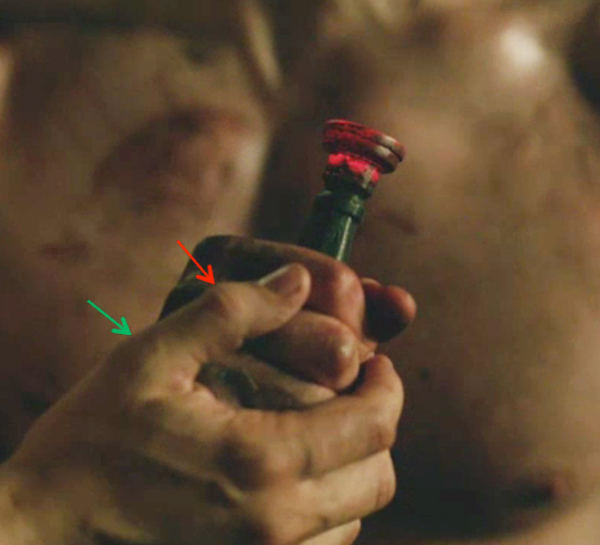
Wracked with pain, Jamie brands himself but stubbornly sears his left side; his heart belongs to Claire! The flexed DIP joints (red arrows) are visible on Jamie’s right fingers as he grips the stamp.
Remember the anatomical mantra: the more bones in a body part, the more possible joints between the bones; the more joints, the more possible movements at the joints? Bone movements occur when muscles that attach to them undergo contraction. So, to better understand hand movements, we must next consider muscles operating the hands.
In Anatomy Lesson #22 we learned that some forearm muscles move bones of the hand. To review, the forearm is divided into two compartments. The anterior compartment contains eight muscles six of which attach to bones of the palmar (front) hand. The posterior compartment contains 12 muscles nine of which attach to bones of the dorsal (back) hand. Covering all the forearm muscles that move hand bones isn’t feasible in a single lesson, so let’s consider a few.
Three important muscles originate from the anterior forearm and end on bones of the digits; these are the long flexor tendons.
The first muscle is flexor digitorum superficialis or FDS (Latin meaning superficial flexor of digits); this muscle arises from humerus and radius (Photo F). Near the wrist FDS splits into four tendons, one to the intermediate phalange of each finger. Contraction of FDS mainly flexes PIP joints (Anatomy Lesson #22) but continued contraction flexes MP and wrist joints.
Try this: strongly flex (curl) your fingers and wrist joint. You used FDS to accomplish this. Identify wrist, MP and PIP joints. Flexion of these joints is critical for the grip (Anatomy Lesson #22).
Photo F
Please think, if the digits have a superficial flexor will they also have a deep flexor? If you answered yes, then you are getting the idea of anatomy! The next anterior forearm muscle is flexor digitorum profundus or FDP (Latin meaning deep flexor of digits). Deep to FDS, FDP (Photo G) arises from the ulna and breaks into four tendons near the wrist to end on the distal phalange of each finger.
Now consider this: if tendons of FDS insert on the intermediate phalanges how will tendons of the deeper-lying FDP reach the distal phalanges? The body’s answer is ingenious! FDP goes through FDS: all four tendons of FDS split to allow FDP tendons to reach the distal phalanges (Photo G – red arrow). Do you see the splits? The engineering is awesome!
FDP flexes the DIP joints but it also contributes to flexion of PIP, MP and wrist joints.
Try this: Attempt to flex only the DIP joints of your fingers. Can you do it? I know a few folks who can but it is unusual. DIP joints typically flex in conjunction with PIP joints.
Photo G
The third muscle of the anterior forearm is Flexor Pollicis Longus or FPL (Latin meaning long flexor of thumb). FPL originates from the radius and inserts on the distal phalange of digit #1, the thumb (Photo H). Its major action is to flex the IP joint of the thumb but continued contraction also helps flex the MP joint.
Try this: flex your thumb and find the IP joint. Flexion is caused by FPL.
Photo H
Do you recall those eight carpal bones arranged in two rows of four bones each (Anatomy Lesson #22) – aye, the ones with the funny mnemonic? These bridge the gap between radius and ulna and five metacarpals. More than a dozen strong fibrous wrist ligaments bind together carpals, metacarpals, radius and ulna (Photo I – grey strands).
Photo I
Two-dimensional images imply that the carpals lay in a flat plane, but this is not so. Wrist ligaments secure them into a curved carpal arch that is convex on the dorsum and concave on the palmar surface (Photo J – curved red line). The carpal arch is spanned by a fibrous sheet, the flexor retinaculum thus forming a potential space, the carpal tunnel (Photo J). But, the tunnel is NOT empty because it contains four FDS tendons, four FDP tendons, one FPL tendon and the median nerve (Anatomy Lesson #22).
Now for an important clinical correlation: truly a tight squeeze, any swelling of structures within the carpal tunnel compresses the median nerve and affects hand areas it subserves, a condition known as carpal tunnel syndrome. Symptoms may include tingling, numbness and pain with reduced strength of thumb and index, middle and half the ring fingers. Repetitive motions that over-extend the wrist such as keyboard use, piano playing, or prolonged use of vibrating tools may be contributing factors.
Photo J
Next, we consider the muscles of the back of forearm and hand: known as long extensor tendons, several muscles reach from posterior forearm to bones of the hand. We won’t name these but to summarize: three long tendons extend the wrist (Photo K – blue arrows) and 5+ long tendons extend the finger joints (Photo K – red arrows). Three long tendons extend and/or abduct the thumb (Photo K – black arrows). Whew!
Photo K
A closer view at the dorsal hand shows long extensor tendons as they cross the wrist. These tendons are held in check by a fibrous band, the extensor retinaculum (Photo L – black arrow). Note bands of fibrous tissue between the long extensor tendons. Known as intertendinous connections they augment extension of the fingers as a unit; if one extensor muscle contracts, it helps activate its neighbors (Photo L).
Try this: Intertendinous connections are quite variable but let’s try to locate one. Place forearm and hand flat on a surface. Pronate the forearm to expose the back of your hand. Try to lift (extend) just the little finger. Can you do it? Next, lift ring, middle and index fingers one at a time. Are some fingers harder to lift independently? I have greatest difficulty lifting middle and ring fingers independently so I know they are bound by an intertendinous connection. Try to locate one of yours.
Photo L
Now, let’s consider intrinsic muscles of the hand beginning with the palmar surface. Palmar skin is tightly bound to an underlying fibrous sheet, the palmar aponeurosis, a feature that aids grasping (Photo M – red arrow). Two superficial muscles are apparent: palmaris longus and palmaris brevis. A forearm muscle, the tendon of palmaris longus blends with the palmar aponeurosis and tenses it during contraction. Many anatomists regard palmaris longus to be a vestigial muscle because it is absent in about 14% of people and its absence doesn’t really affect our ability to grip. Palmaris brevis is a tiny postage stamp-sized muscle near the base of the little finger (Photo M); its contraction puckers the palm skin and deepens a cupped palm.
Photo M
Try this: Spread your digits and tap your palm. Feel that taut springy tissue? That’s the palmar aponeurosis. Now, bring pads of thumb and little finger together and strongly flex the wrist. Does a tendon stand out in the midline (Photo N – black arrow)? If so, this is palmaris longus. Repeat with the opposite side. What is the pattern of your forearm? Do you have two palmaris longus muscles, one or neither? Turns out I have one on the left but none on the right.
Photo N
I love watching Jamie balance and twirl a dirk on the palm of his hand (Starz episode 105, Rent). See the puckered flesh at the base of his palm (red arrow)? This is caused by contraction of palmaris brevis to help cup his palm and support the dirk. Yep, Jamie has one! Is Claire watching his clever performance? Aren’t we all?
The hand contains 19 intrinsic muscles (including palmaris brevis), meaning they arise and insert within the hand itself. These small muscles initiate fine movements of the digits. It would be tedious to name them all so understand that the thumb has four intrinsic muscles concerned with flexion, opposition, adduction and abduction (Photo O – green overlay). The little finger has three muscles which flex, oppose, and abduct (Photo O- purple overlay). Between the long flexor tendons and metacarpal bones are 11 additional muscles (lumbricals and interossei) which help flex, abduct and adduct the fingers (Photo O – black arrows). All totaled a whopping 34 forearm and hand muscles are involved in hand movements!
Photo O
Like most body parts, the hand needs a blood supply. The large ulnar and radial arteries descend through the forearm, cross the wrist to form superficial and deep palmar arches (Photo P). Branches from both arterial arches produce two small arteries (proper palmar digital arteries) for each finger. The radial artery supplies branches to the thumb. The dorsal hand (not shown) has a smaller arterial arch that produces two more small arteries to each finger. Ergo, each finger has four supplying arteries; the thumb has three.
Photo P
For those who do not understand blood flow, a full lesson on this subject lies in the future. For now, please know that the digital arteries carry blood ladened with oxygen and nutrients to the digits. They divide into smaller arterioles which branch into microscopic capillaries forming capillary beds (Photo Q). In the capillary bed, oxygen and nutrients are exchanged for carbon dioxide and waste products. The capillary bed reforms into venules that unite to form veins draining blood from the tissues. This general plan is followed throughout the hand and in most body tissues.
Photo Q
Time for a clinical correlation about blood supply: capillaries have very thin walls. When subjected to trauma, these vessels burst leaking blood into surrounding soft tissues. Extravasated blood presents as a contusion, a reddish-purple-dusky discoloration which doesn’t blanch when pressed: the classic “black and blue” bruise (Photo R).
Photo R
Several students have inquired about Jamie’s blackened hand and digits following his rescue from Wentworth Prison. They were concerned that his hand exhibited tissue necrosis or gangrene. But no, discoloration is due to the beating administered by that depraved, demented devil. This gut-wrenching scene gives evidence of early bruising (black arrow): a vivid color range from deep red to purple to dusky blue. Very convincing!
Later on the Cristabel, Jamie’s thumb and fingertips are fully black and blue. The pounding mallet did a number on his hand capillaries and the bruising is fierce!
We are done with the real and applied anatomy lesson so let’s finish with examples of how hands are used in Starz episode 116 To Ransom a Man’s Soul.
“Dear God, you are a magnificent creature” utters the crazy cunning cutthroat with Jamie spread across his lap. As I gazed at this imagery, it seemed vaguely familiar. Then, B-I-N-G-O!
Intentional or not the position, posture and attitude are very nearly a mirror image of the Pietà, a Renaissance sculpture by Michelangelo Buonarroti (1475-1564) of the Madonna cradling a crucified Christ. This riveting juxtaposition of images reveals universal opposites: dark versus light; evil versus good; cruelty versus mercy, all deeply rooted themes in Diana’s works. Randall even draws the analogy to Jamie’s suffering: “Ah, so that’s your plan; to submit like Christ on the cross?” Helping hands, healing hands, or hurting hands. No brainer, here!
Later, the foul, festering fiend sensuously rubs lavender oil into Jamie’s painful burn telling him “These are Claire’s hands. Think of your wife.” There are new bruises on Jamie’s left shoulder. We don’t know what caused these – mayhap a mallet blow went astray? We shouldna be deceived by this perceived gentleness because BJ is about to deliver extreme mental pain to Jamie. Hurting hands, helping hands, healing hands?
After suffering hours of agonizing pain, BJ tells Jamie to:
“Think of Claire. Think of your wife. Wait for me. Claire’s here.”
Sadly, the soulless one said he would have Jamie’s surrender before he left this world and he does. Then BJ delivers his cruel, mocking coup de grâce: “I understand. How could she ever forgive you?” His hands are made for hurting and they are remarkably skilled at their work!
Ugh! Enough of hurting hands…How about some healing hands? We already witnessed Claire’s healing hands as she cleanses and sets Jamie’s battered hand. Here she tidily stitches his skin lacerations. Her competency as a 20th century WWII combat nurse, her ingenuity at using 18th century tools and her brilliant, fertile mind are testimonies of her love and devotion to Jamie. Her hands have come to his rescue over and over throughout the Starz series; a true symbol of healing.
We’ve seen Claire reset Jamie’s broken bones and mend his wounds. Picking lavender, grinding buds in a mortar and pestle to make oil of lavender is yet another example of her healing hands as she prepares to enter the darkness with Jamie.
As she rests her healing hand on her husband, he struggles with shame and self-loathing. “You belong to no one else but me…Well, Randall had your body but I’ll be damned if he has your soul as well.” Go Claire! Ye make us proud!
Finally, Godfather Murtagh’s healing hands are at work as he cuts JR from Jamie’s skin and casts the scrap into the fiery furnace! Mercifully, healing hands are plentiful in Starz episode 116.
Let’s finish this lesson with examples of helping hands. First is a fantastic image of the three Highland musketeers rescuing Jamie from the “thug under the door.” Murtagh stolidly carries his precious cargo from Wentworth Prison to freedom. Angus furtively peers backward with dirk in hand while Rupert rides shotgun! Yeah, helping hands! Ye made me weep with relief!
So many helping hands at the monastery reach out to the party of Highlanders offering refuge, supplies and care for Jamie, wounded in body and soul.
More helping hands as the goodly Father comforts Claire after her confession: a far cry from Father Bain, no?
Finally, we catch Angus’ au revoir kiss but did ye ken that the wee laddie’s helping hand helps itself to some of Claire’s personal real estate? Naughty Angus Mhor!
Helping hands, healing hands, hurting hands… how shall we use our own? Mine will continue to write lessons throughout the summer although most will be shorter and less complex. Thanks to all who love anatomy and Outlander!
Oh! Last week, I was invited by Jennifer Barnes, Ryan Hooks and Keetin Marchi (they are such great fun!) to give a mini anatomy lesson about the hand on the Outlander Aftershow at TheStream.TV. You can see it below around 16:30. Now that we face another bout of withoutlander, you can join our friendly hosts for the Outlander Book Club on Monday nights where they compare and contrast the book and the show: http://bit.ly/1dqHXxQ. Happy Summer!
The deeply grateful,
Outlander Anatomist
Follow me on:
- Twitter @OutLandAnatomy
- Join my Facebook Group: OutlandishAnatomyLessons
- Instagram: @outlanderanatomy
- Tumblr: @outlanderanatomy
- Youtube: Outlander Anatomy
Photo creds: Sony/Starz, Netter’s Atlas of Human Anatomy, 4th ed Gray’s Atlas of Anatomy for Students, 2005, ClinicallyOriented Anatomy 5th ed, www.artsology.com, www.imgbuddy.com, www.medicalartlibrary.com, www.parlmreadingperspectives.wordpress.com, www.wikipedia.org, www.wikiradiography.com, www.shutterstock.com

